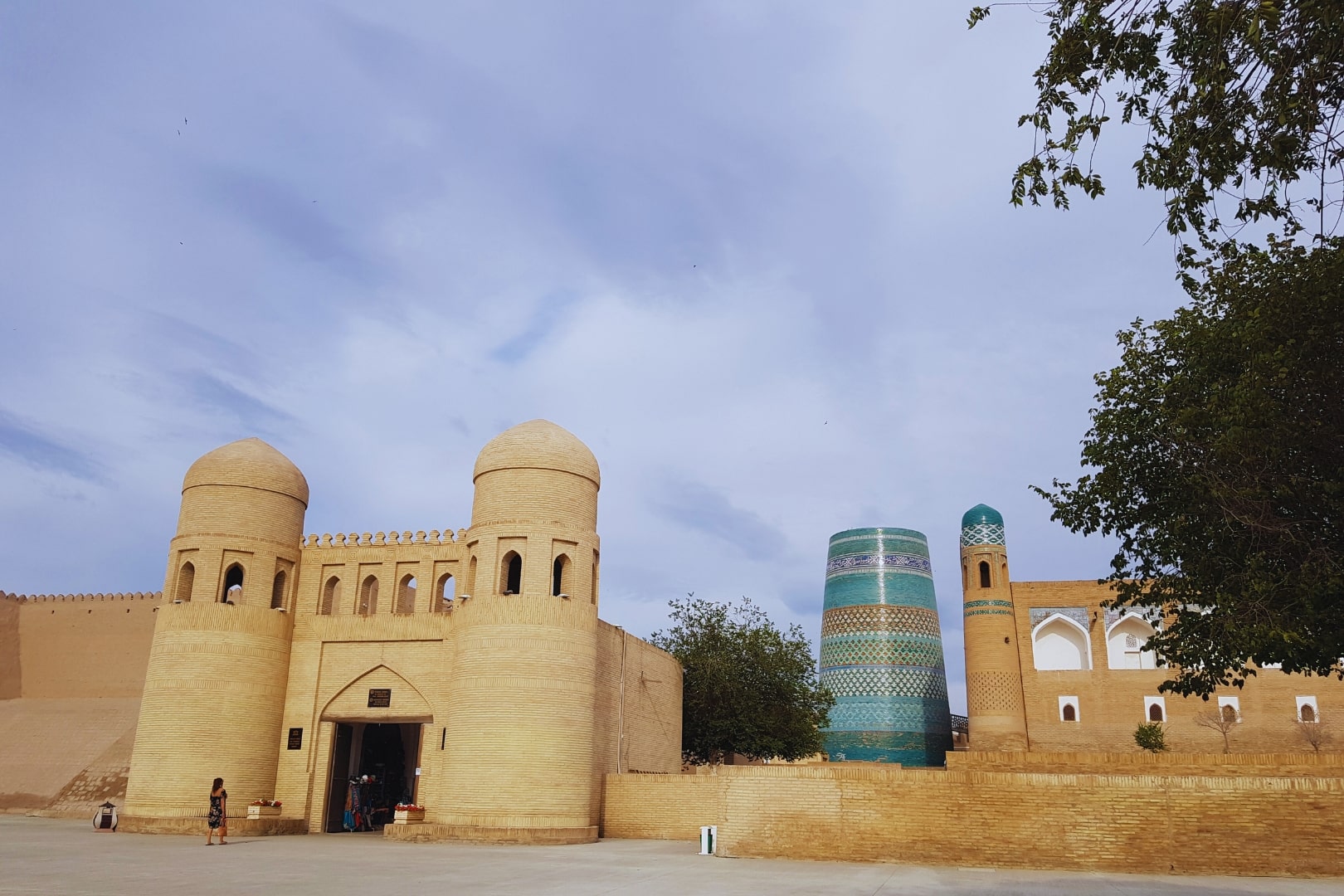Что нужно знать перед посещением Хива
Хива – наследница великого древнего мира. Будучи одним из древнейших городов Азии, Хива была основана в V веке до нашей эры. На протяжении многих веков Шелковый путь проходил через основные города Центральной Азии, соединяя восток и запад. Торговцы останавливались здесь отдыхать. Выпивая кристальную воду из источника, они с удовольствием произносили слова «Эй вау» (О, как здорово!). Поэтому местные жители дали этому месту название «Хейвак». Эта чарующая легенда повествует о раннем основании города Хивы. Йичан-Кала является одной из главных частей города, а также первой достопримечательностью Узбекистана, включенной в Список всемирного наследия в 1991 году.
Emergence of the first states in Uzbekistan refers to VIII-VII centuries BC, with the establishment of such states as Khorezm and Bactria. In the third century BC Alexander the Great conquered Sogdiana and Bactria, married Roxane, the daughter of the local governor of Bactria. Resistance to the invaders was fierce, causing Alexander's army to stay in the area. With the IV century BC begins flowering of ancient Khorezm. Starting from 305 to 995 year dynasty ruled Khorezm Khorezm Afrigidov. In the VI-VII centuries, most of the territory of modern Uzbekistan was part of the Turkic khanate, and then the Western Turkic Khaganate.
One of the major cities - acropolis in Central Asia, which for many centuries was the capital of the Khorezm state. The city was founded about 2,400 years ago, as a result of the transfer of the capital from Kuhn Urgench (modern Turkmenistan). The city was located on one of the branches, in the lower reaches of the Amu Darya River. Due to natural disasters this sleeve has dried or changed direction, and Kuhn Urgench was abandoned. Now the city is located in the Khorezm region, 25 km from the administrative center of Urgench. The town consists of two parts - Ichan Kala (Inner City) and Dishan Kala (outside city). Ichan Kala is surrounded by perimeter walls and fortifications have several gates. There are many buildings from different times such as madrassas honakoh, mosques, and minarets, the palace harem dungeon (jail), craft shops, stalls and houses of the nobility.
The political history of Khiva filled with numerous conquests of the neighboring countries and internal feudal strife. Khiva history waged a fierce war against the Khanate of Bukhara to establish its rule across Central Asia.
Complex, contradictory, full of political and social upheaval the path was traversed by the peoples of Central Asia and the impact on cultural life. Development of culture proceeded in line with the changes taking place in the socio-political life. The activities of the Central Asian scientists based on the achievements of the earlier period. Studied and commented on the works of scientists of past centuries.
Epoch of the Shaherezada’s tales
Since ancient times Khorezm controlled northern trade routes from Central Asian interfluve. Khorezm was for the whole region the Holy Land ("ayranvaychah") Avesta, the center of ancient cults. State association in Khorezm already existed in the 7th century. BC Archaeological evidence suggests that in the second quarter of the first century BC in this region was a powerful irrigation network, feeding of the Amu Darya. In the middle of the 6th century BC, Khorezm was conquered by the Persians, led by King Cyrus.
This king was killed in battle with the nomads - Massagets led by Queen Tomiris. According to legend, Tomiris ordered to cut off the dead Kira's head and dip it in a bag filled with blood to sate its bloodthirsty enemy. In 4 and 5 BC Khorezm seeks independence from the Persians. Befinning form 4th century BC Khorezm became known writing, the royal residence - Toprak-Kala, the ancient mausoleum, a temple and observatory - Coy Krylgan-kala.



